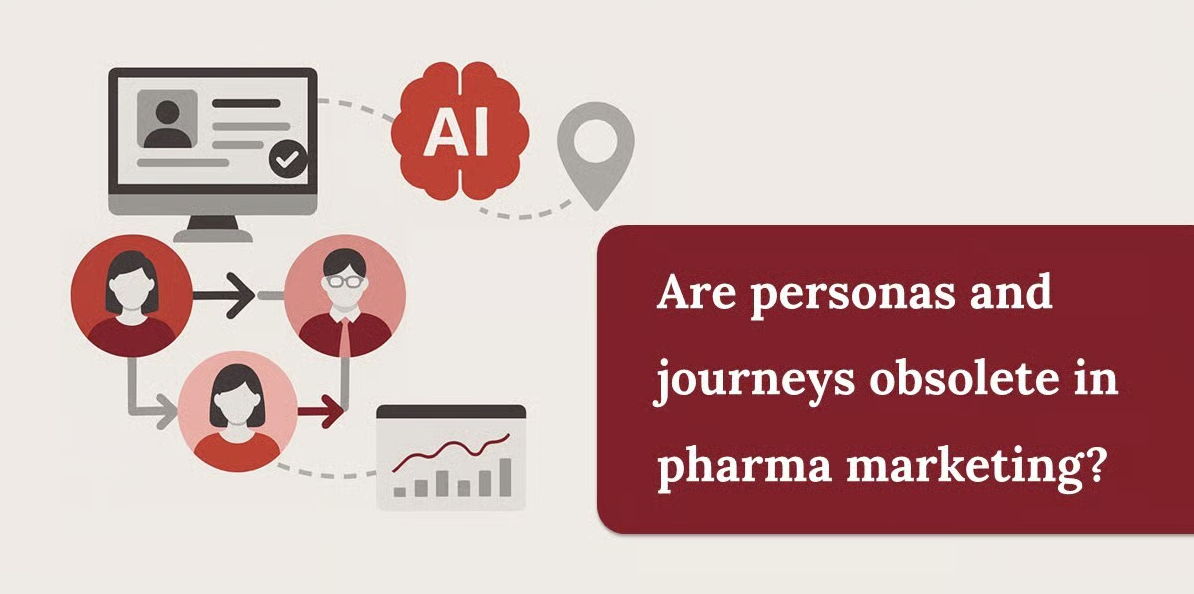We spoke with 87 senior pharma leaders across customer excellence and commercial roles worldwide. The takeaway? AI isn't replacing personas and journeys—it’s enhancing them.
Here are three key ways AI and advanced analytics are transforming traditional marketing approaches in pharma:
- Smarter Segmentation: AI enables precise customer micro-segmentation, helping teams creatively reuse content and incorporate a broader range of data sources.
- Continuous Improvement: With AI, teams can systematically collect feedback from both reps and customers, analyze it, and refine campaigns in real time—often by the next sales cycle.
- Enhanced Team Performance: By tracking journey performance and identifying effective rep behaviors, organizations can promote what's working and adjust what’s not.
We have compiled a detailed guide below, packed with best practices and examples from our research and the award-winning OctoPi platform, which supports commercial teams at some of the world's top pharma companies.
Smarter Segmentation with AI
Current Landscape and Hybrid Approach
Let’s look at the current landscape of persona and journey use in pharma.
Based on interviews with 87 industry leaders:
- 7% reported no customer segmentation
- 84% use traditional segmentation approaches
- 9% have adopted hybrid AI-enhanced segmentation
- 0% are running fully personalized, AI-driven marketing
What this means:
Most organizations are still using traditional persona-based strategies. However, a growing minority is pioneering a hybrid approach—creating 10–20 "micro-personas" and designing optimized journeys using both existing materials and AI insights.
These advanced teams combine internal and external data to understand what drives engagement and conversions. They then create data-backed personas and tailor journeys accordingly.
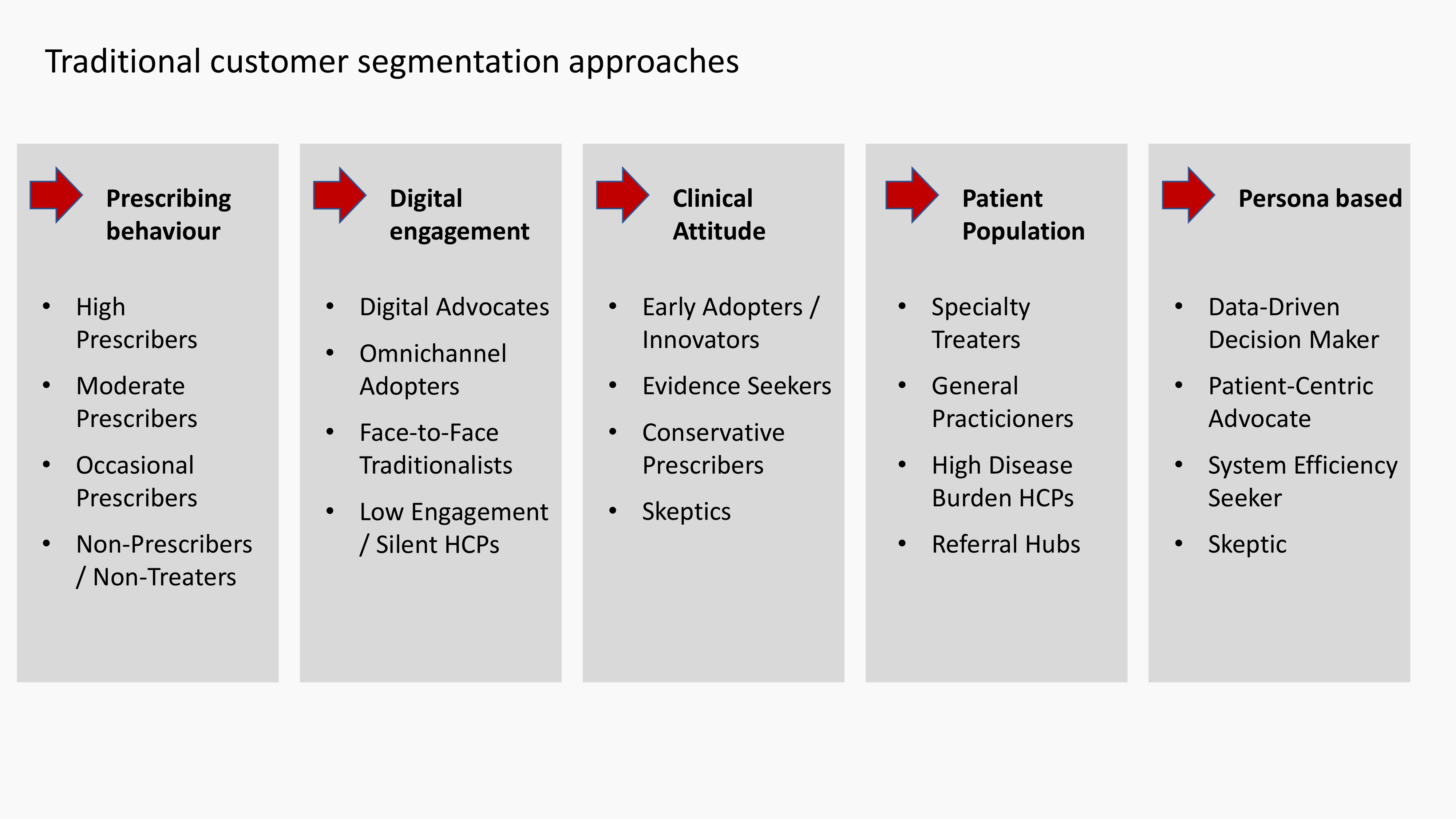
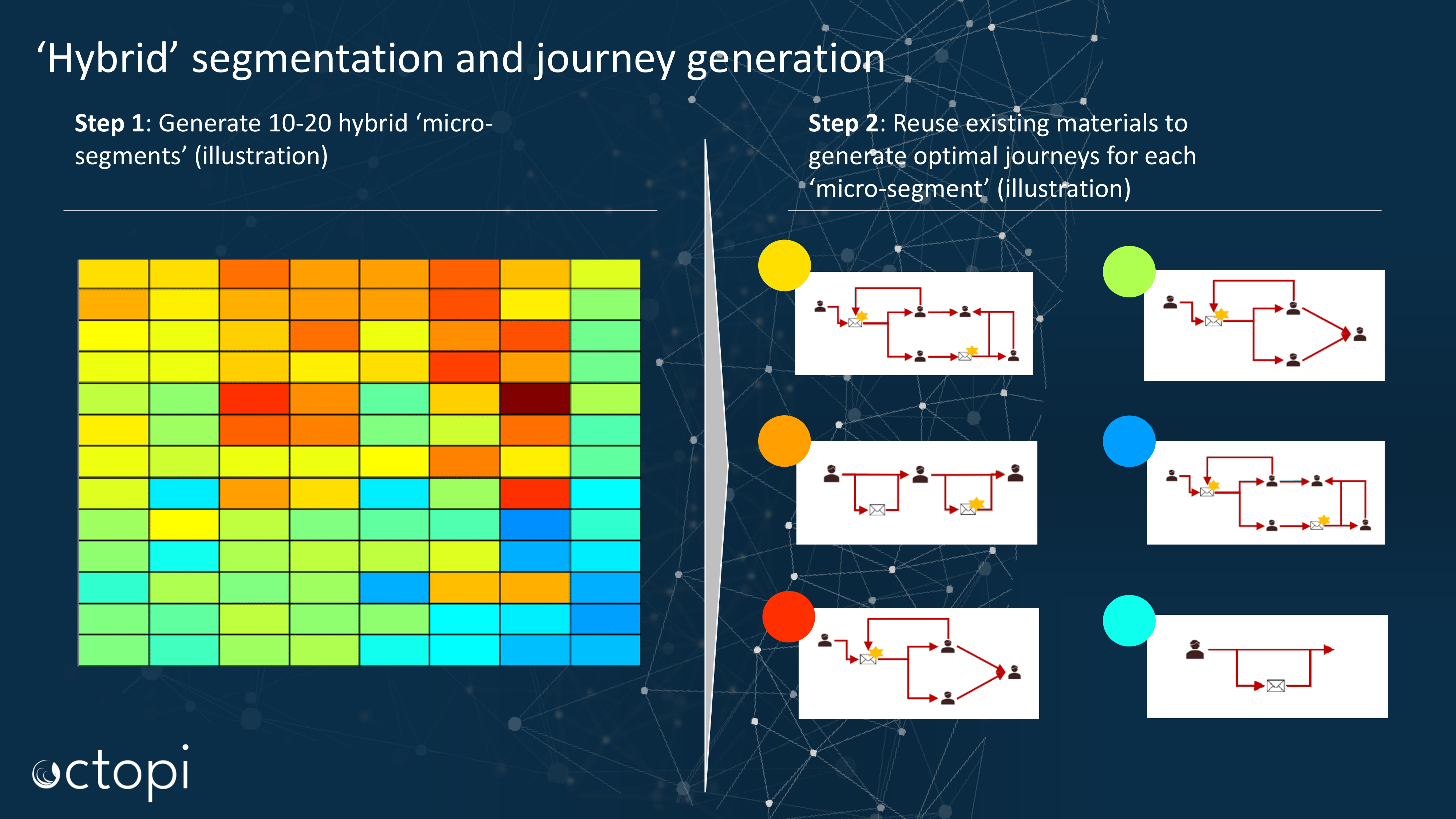
Creatively Reuse and Automate Marketing Content
Successful persona and journey deployment hinges on automation.
Top-performing pharma teams use Next Best Action (NBA) platforms to automate journey orchestration. In fact, 63% of the leaders we spoke to already use such tools—especially those with hybrid AI strategies.
Key success factors for NBA platforms include:
- Fast deployment and easy updates of complex journeys
- Clear visibility into journey steps for sales reps
- Integrated, customizable feedback collection
- Real-time tracking of journey progression and KPIs
(Needless to say, OctoPi does all of this out of the box.)
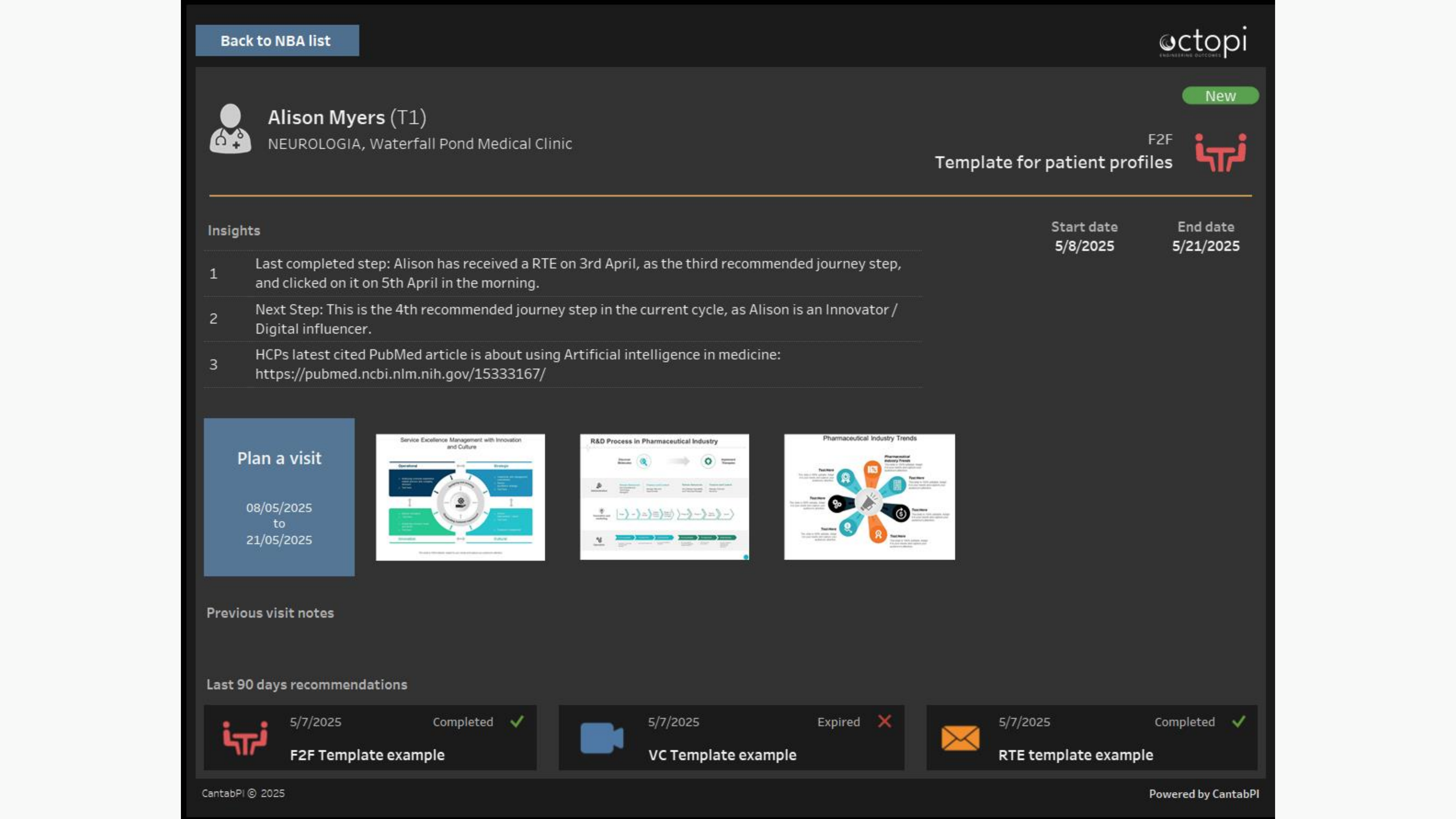
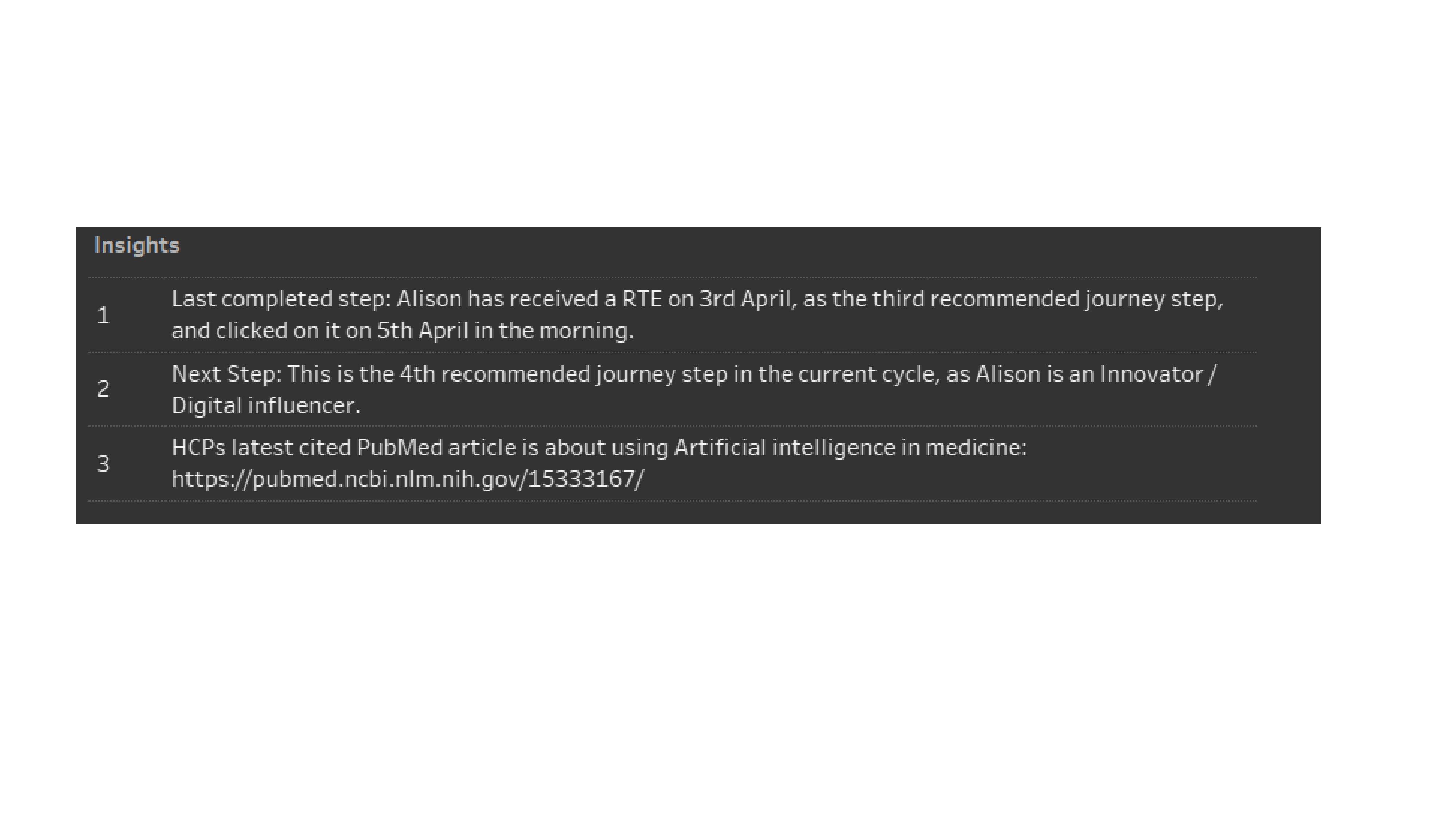
Use Data Creatively for Segmentation
One high-impact example of creative segmentation is content tagging.
Here is how it works:
- Label all content (e.g., slides, RTEs) with relevant themes—such as efficacy, safety, urgency, quality of life, or administration
- Tag external content (like HCP social posts) when available
- Measure engagement for each label by customer
- Use AI to identify preference patterns
- Segment HCPs based on these preferences and tailor journeys accordingly
This data-driven method leads to more meaningful, personalized experiences.
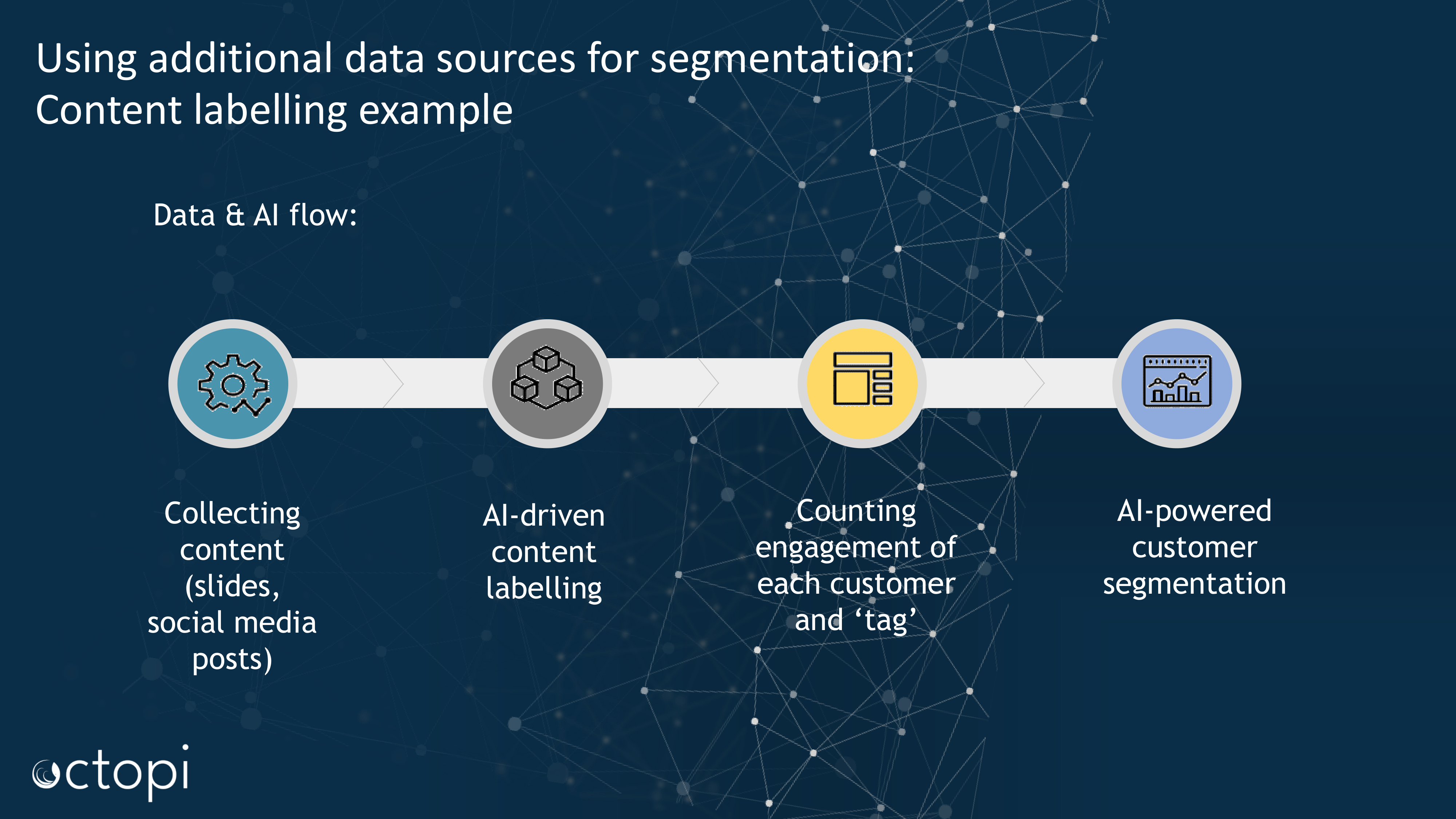
Measure Impact and Iterate
Collect Feedback Consistently
The best pharma marketing teams gather continuous feedback, especially from field reps. The gold standard? Embedding simple, customizable feedback forms directly into your NBA platform.
Well-structured forms distinguish between:
- Content/journey ineffectiveness
- Access limitations (independent of content)
- Technical or other external issues
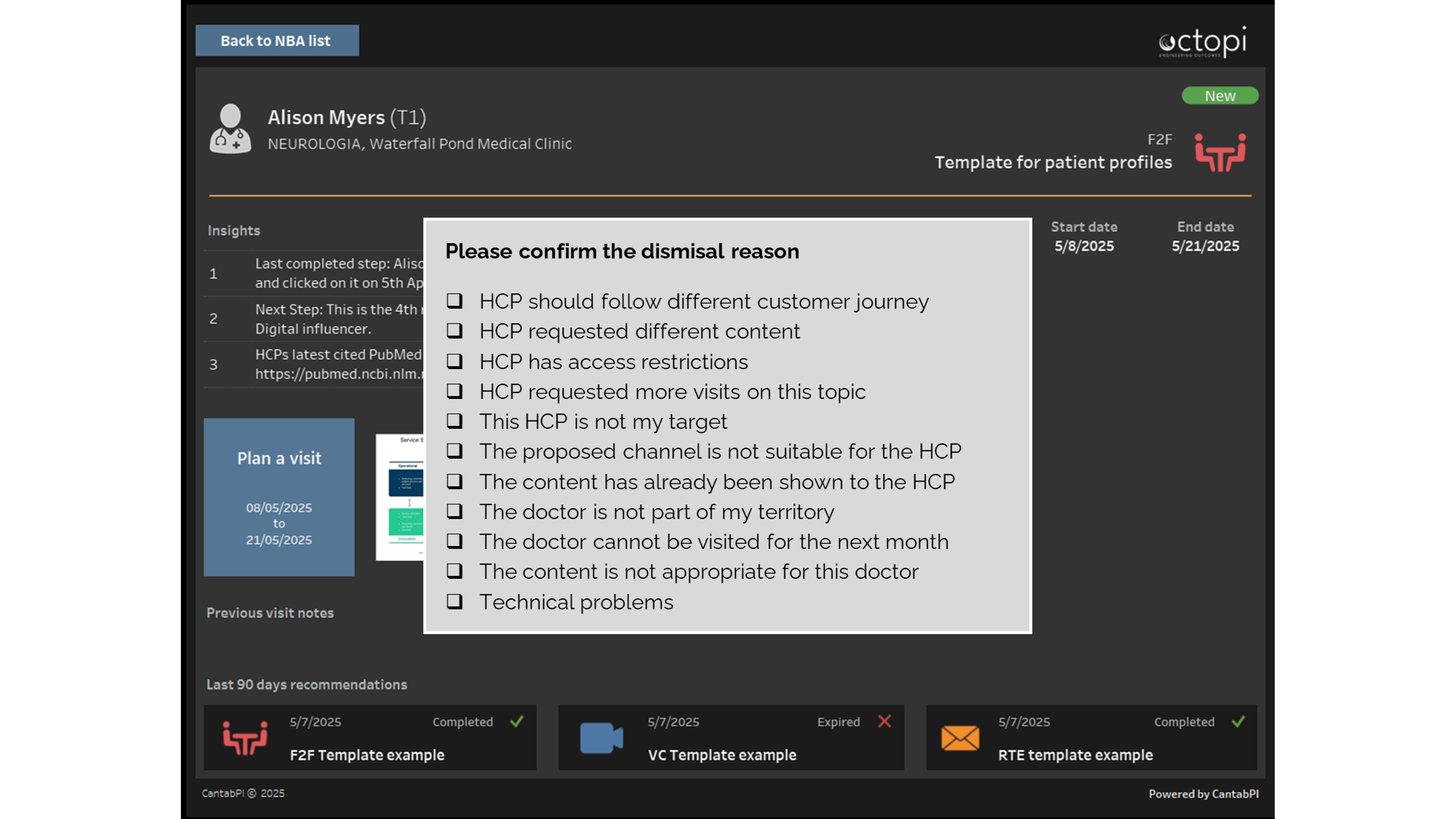
Analyze and Improve with AI
AI can turn raw feedback into actionable insights. Here are three principles for doing it right:
- Measure impact: Correlate journey performance with sales and engagement metrics (e.g., clicks)
- Spot what works: Identify top and bottom performers using objective KPIs
- Understand why: Use AI to analyze feedback and uncover root causes
Apply Learnings in the Next Cycle
Here’s a real-world example from an OctoPi deployment.
After a sales cycle, the marketing team received three key recommendations:
- Boost scientific content: For personas X, Y, and Z (where journeys underperformed), increase scientific content to 40% of slides
- Refine channel mix: Drop email for segment A; increase email for segments B, C, and F
- Add 'consultative' steps: Include content using probing questions for all segments except Y
The result? A measurable uptick in engagement and completion in the following cycle.
Drive Team Performance
Track What Matters
Measuring journey performance is the first step toward improvement. Leading Next Best Action platforms automatically track metrics like:
- Journey step completion rates
- Attainment vs. forecast at each cycle stage
- Average journey progression
- Full journey completion rates
All of these are typically displayed in real-time dashboards.
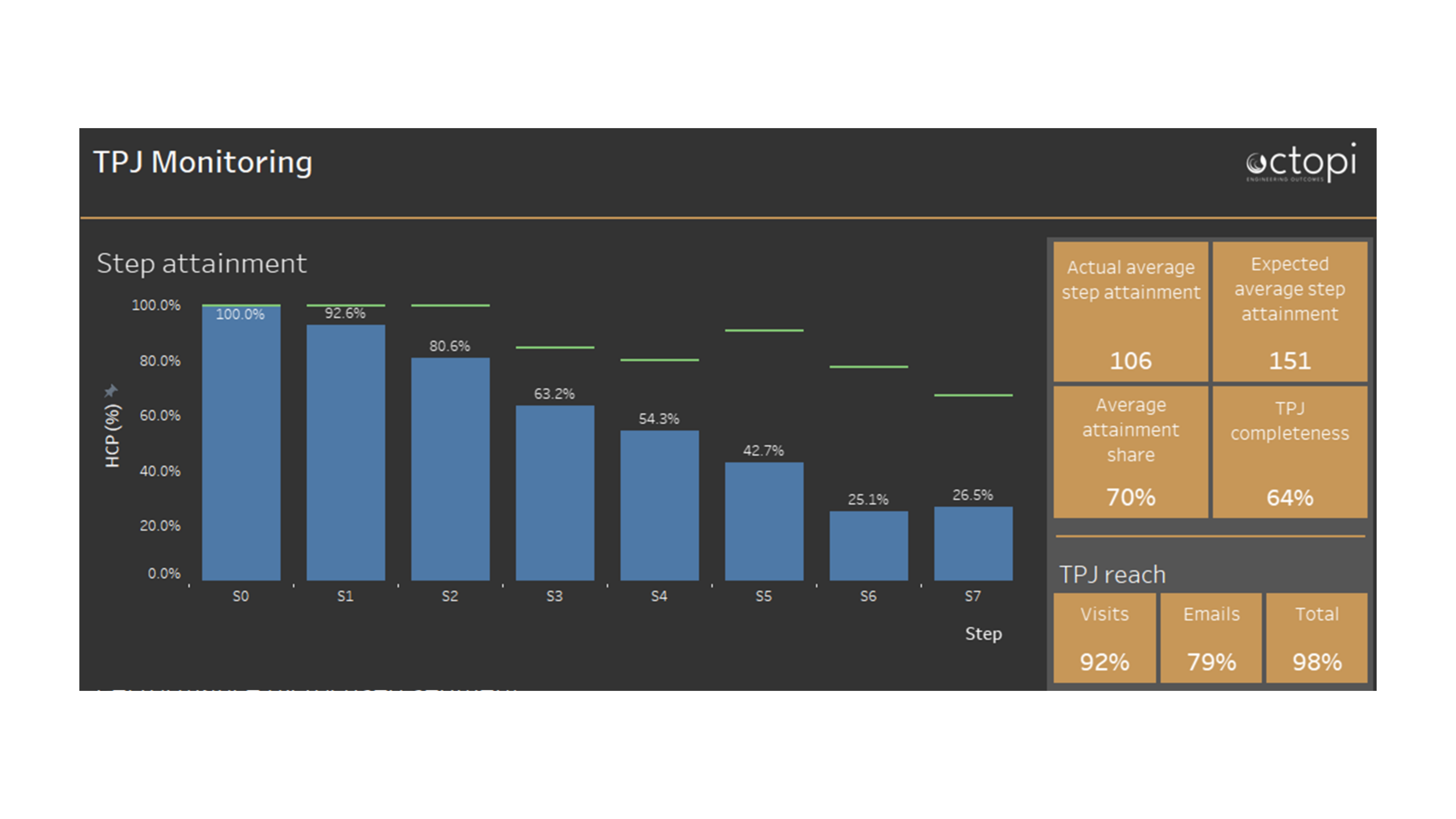
Spot Behavioral Patterns
AI can reveal valuable patterns in rep behavior. In one case, an underperforming market showed the following rep segments:
- Champions – top performers following the journey strategy
- Traditionalists – high-impact, but not tailoring content
- Slow Movers – compliant but inefficient
- Fakers – gaming the system to appear compliant
This analysis drove a targeted change management effort, using Champions to inspire and mentor their peers.
Keep Stakeholders in the Loop
AI can also help scale and tailor internal communications. Different stakeholders need different updates—varying in content and frequency.
With the help of tools like OctoPi and prompt-driven automation, regular, audience-specific updates become fast and easy to generate.

If you found this useful, follow us on LinkedIn and check back next week for more insights into pharma commercial excellence.
